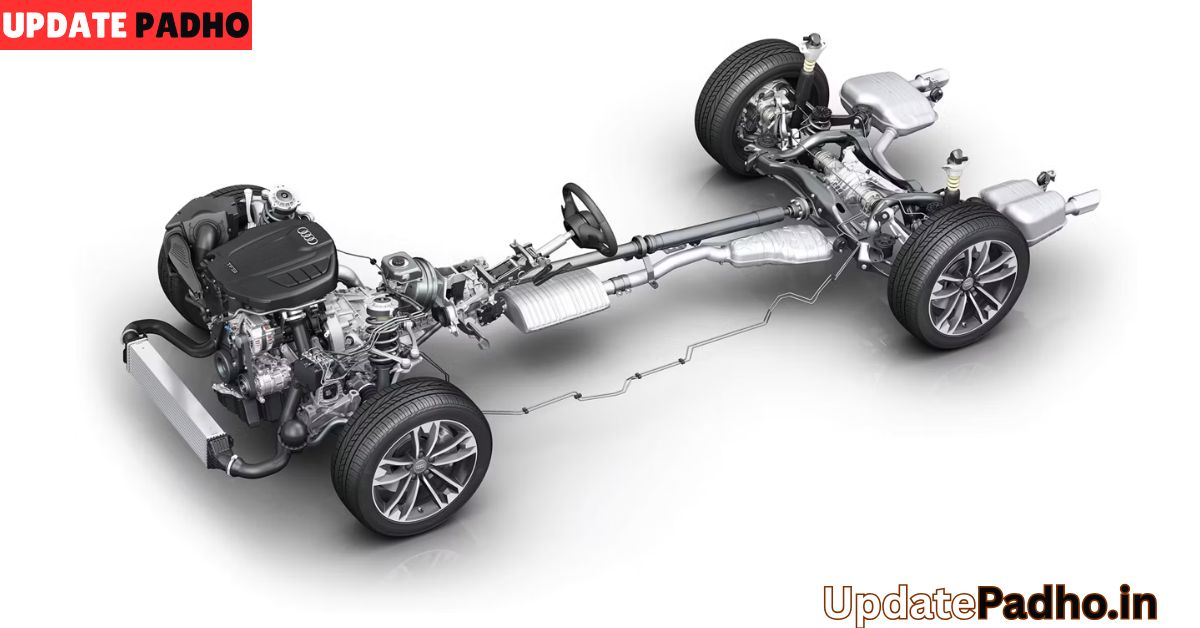When it comes to blending performance, safety, and engineering excellence, few automotive innovations have made as lasting an impact as Audi’s quattro all-wheel-drive (AWD) system. Since its debut in the early 1980s, quattro has become a hallmark of Audi’s identity, delivering superior traction, balance, and driving confidence in virtually all conditions. But what makes this system so revered? Let’s take a closer look at the technology, the legacy, and the driving experience behind Audi’s quattro AWD.
The Origin of quattro: A Revolution in Rally
The story of quattro begins not on smooth city streets, but in the harsh, unpredictable terrain of rally racing. In 1980, Audi introduced the original quattro coupe, equipped with an innovative AWD system that gave it a decisive edge in the World Rally Championship (WRC). Up until then, most rally cars relied on rear-wheel or front-wheel drive. Audi’s use of a full-time AWD system changed the game.
The quattro’s dominance was immediate and profound. It won multiple championships and redefined what was possible in motorsport. More importantly, it showed the world that AWD wasn’t just for off-road or rugged utility vehicles—it could deliver high performance, even in sleek, sporty packages.
How quattro AWD Works
At its core, the quattro AWD system is designed to distribute power to all four wheels rather than just the front or rear axle. This helps improve traction, stability, and control—especially in challenging conditions such as rain, snow, gravel, or high-speed cornering.
Over the years, Audi has developed several versions of the quattro system, tailored to different vehicle platforms and performance goals. Here are the main types:
- Mechanical Torsen-Based quattro (Permanent AWD):
Used in performance-oriented models like the Audi S and RS lines, this system utilizes a self-locking center differential (Torsen, short for “torque-sensing”) to send power where it’s needed most. Normally, the system maintains a 40:60 front-rear power split, but it can adjust torque distribution dynamically if it detects slippage. - Haldex-Based quattro (On-Demand AWD):
Found in smaller or transverse-engine Audi models like the A3 or Q3, this version uses an electronically controlled multi-plate clutch to engage the rear axle only when necessary. It’s lighter and more fuel-efficient than the permanent system but still provides improved grip when conditions demand. - quattro with Ultra Technology:
A more recent innovation, this system optimizes efficiency by decoupling the rear axle when AWD isn’t needed. When slippage is detected or anticipated (such as during acceleration or in wet conditions), the system re-engages seamlessly.
The quattro Driving Experience
What does all this engineering mean for the everyday driver? In short: confidence and control. Whether you’re taking on a twisty mountain road, navigating slick urban streets, or pushing the limits on a track day, quattro makes the vehicle feel planted and secure.
Drivers often describe quattro-equipped Audis as having “unshakable composure.” The added traction helps reduce understeer and oversteer, making cornering smoother and more predictable. It’s not just about performance, though—quattro also enhances safety. When one or more wheels lose grip, the system can redirect torque almost instantly to maintain momentum and stability.
quattro in Everyday Life
For those who live in regions with harsh winters or heavy rainfall, quattro provides a major advantage. Icy roads, slushy intersections, and steep driveways become far less daunting. But it’s not only for adverse conditions—quattro improves handling even on dry pavement. The added traction gives you more confidence to accelerate out of turns, merge onto highways, or make sudden evasive maneuvers.
Audi has also managed to integrate this AWD system without compromising design or efficiency. Modern quattro vehicles remain sleek, refined, and luxurious, offering everything from practical daily drivers to high-performance sports sedans and SUVs.
The quattro Legacy and Future
Quattro is not just a technology; it’s a brand within the Audi brand. It symbolizes Audi’s commitment to innovation, performance, and driver-focused engineering. Over the years, it has powered icons like the Audi S4, RS6 Avant, and the R8 supercar—proving that AWD doesn’t have to mean boring or bulky.
Looking ahead, Audi is already implementing its AWD expertise in electric vehicles. The e-tron series uses electric motors at each axle to create an advanced version of quattro for the EV age. With instant torque and precise electronic control, the future of quattro looks just as exciting as its storied past.
Final Thoughts
Audi’s quattro system represents more than just a technical achievement—it’s a philosophy. It stands for intelligent performance, uncompromising safety, and the thrill of being in control. Whether you’re an enthusiast or someone who just wants a car that can handle whatever the road throws at it, quattro delivers a uniquely capable driving experience.



